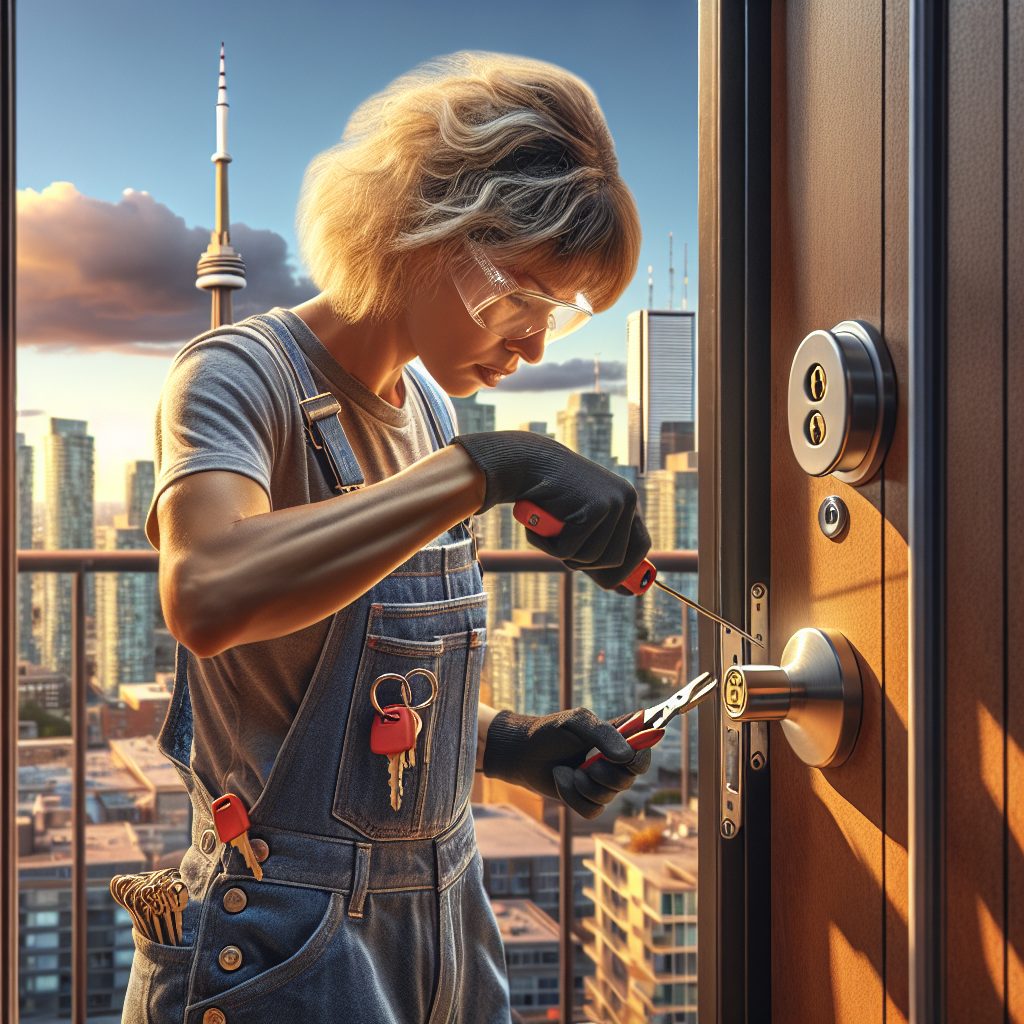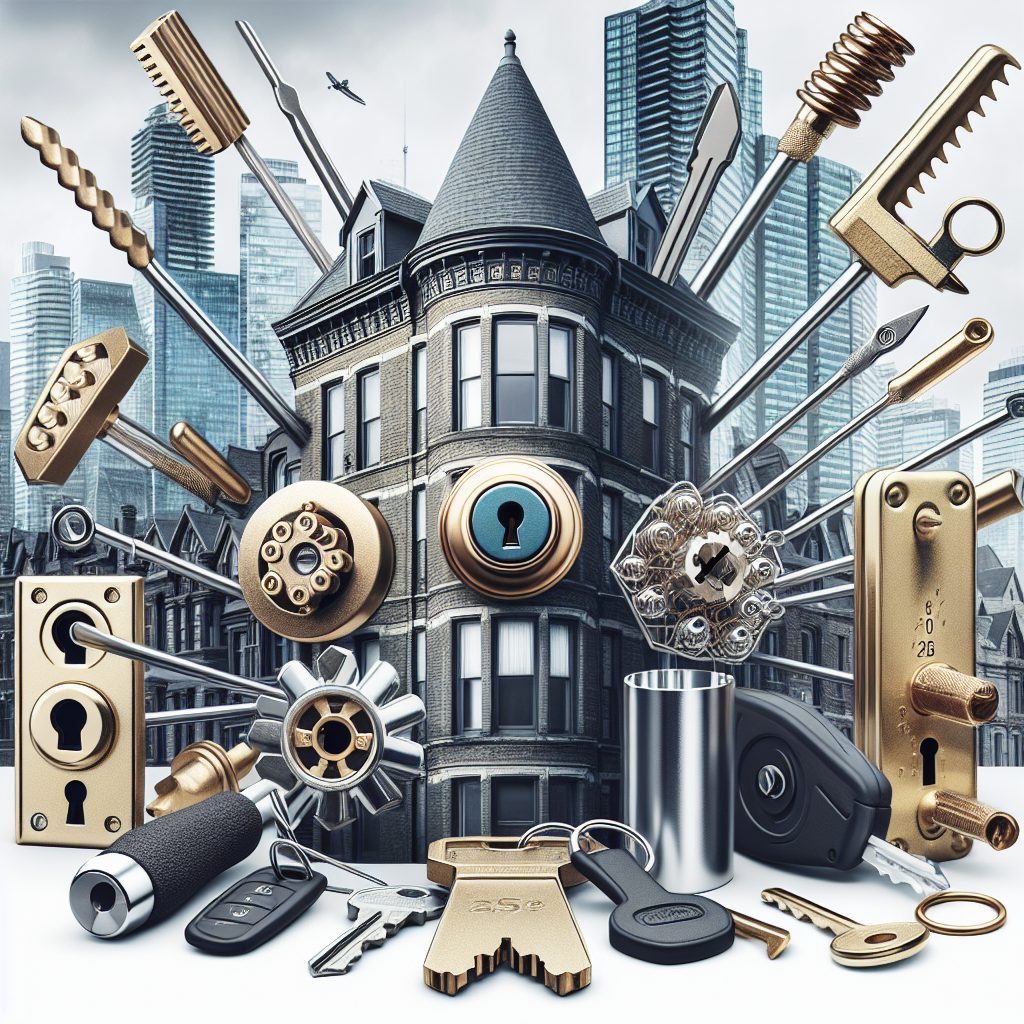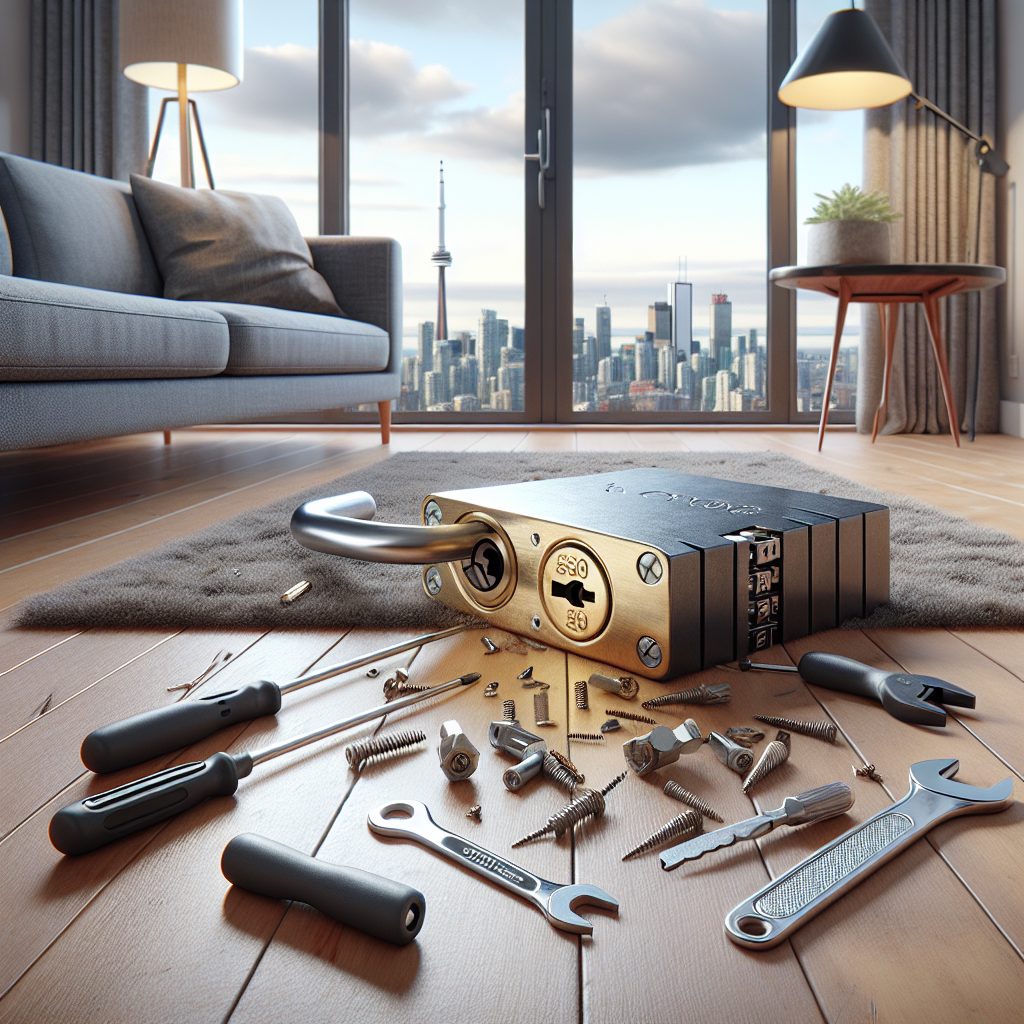Lock installation for new tenants in Toronto is a crucial step in ensuring the safety and security of their new living space. With the rising concerns over burglary and break-ins, it is imperative for tenants to prioritize the installation of reliable locks. According to statistics, Toronto has experienced a significant increase in property crimes in recent years, making it all the more essential for new tenants to consider this important aspect. By installing high-quality locks, tenants can not only protect their belongings but also enjoy a sense of tranquility and peace of mind in their new home.
Apart from the obvious benefits of security, lock installation for new tenants in Toronto can also have several specific impacts. One such impact is the prevention of unauthorized access to the rental property. By having sturdy locks installed, tenants can deter potential intruders and ensure that their personal space remains private and secure. Additionally, the installation of reliable locks can also reduce the risk of vandalism or property damage, saving tenants from unnecessary expenses or inconveniences.
Moving forward, in the next section of this article, we will discuss the key takeaways related to lock installation for new tenants in Toronto. These takeaways will include tips on choosing the right locks, understanding the different types of lock mechanisms available, and the importance of regular maintenance. By providing this comprehensive information, we aim to equip new tenants with the necessary knowledge and tools to make informed decisions about their security needs.
Key Takeaways
1. New tenants in Toronto must prioritize lock installation for their safety and security.
2. Tenants should consult with their landlords before making any changes to their locks.
3. Landlords are responsible for ensuring that the property is secure and may provide guidelines for lock installation.
4. Tenants should consider upgrading to high-security locks, such as deadbolts, to enhance their protection.
5. It is advisable for tenants to keep spare keys in a secure location and avoid handing them out to unauthorized individuals.
How to Install Locks for New Tenants in Toronto?
Understanding the Importance of Lock Installation
As a new tenant in Toronto, one of the first priorities is to ensure the security of your rental property. Lock installation plays a crucial role in safeguarding your belongings and ensuring the safety of yourself and your loved ones. By installing reliable locks, you can have peace of mind and protect your property from potential break-ins. Let’s explore everything you need to know about lock installation for new tenants in Toronto.
Types of Locks
Before diving into the installation process, it’s essential to familiarize yourself with the different types of locks available. Toronto offers a variety of locks suitable for rental properties, including:
- Deadbolt locks: These locks provide superior security as they cannot be easily picked or manipulated. They should be installed on all external doors.
- Knob locks: Knob locks are commonly found on interior doors and provide a basic level of security. However, they are not recommended as the sole lock on an entrance door.
- Keyless entry systems: These modern locks provide convenience and security by allowing tenants to enter using a code or smartphone app.
Choosing the Right Lock
When selecting locks for your rental property in Toronto, it’s essential to consider several factors:
- Security level: Opt for high-security locks, such as deadbolts, to ensure maximum protection.
- Key control: Discuss with your landlord whether a master key system is in place, which could compromise your privacy. Consider rekeying the locks or installing new ones.
- Building regulations: Some buildings have specific requirements concerning lock types and sizes. Ensure your chosen locks comply with these regulations.
- Cost and durability: Find a balance between your budget and the quality of the locks. Investing in durable locks can save you money in the long run.
Installation Process
Now that you have chosen the right locks for your rental property, it’s time to proceed with the installation process. Follow these steps:
- Gather the necessary tools: You will need a screwdriver, tape measure, drill, hole saw, chisel, and a marker.
- Measure and mark: Determine the proper height for the lockset on the door and mark it accordingly using a tape measure and marker.
- Drill pilot holes: Use a drill to create pilot holes for the lockset and latch.
- Chisel the door edge: Create a recess for the latch plate by chiseling the door edge mortise.
- Install the lockset: Insert the lockset into the door, aligning it with the pilot holes. Secure it in place with screws.
- Install the strike plate: Attach the strike plate to the door frame using screws.
- Test the lock: Ensure that the lock functions properly by testing it with the door closed and opened.
Tips for Lock Maintenance
Proper lock maintenance is essential to prolong their lifespan and ensure optimal performance. Consider the following tips:
- Regular lubrication: Apply a small amount of graphite lubricant to the lock’s keyway to prevent friction and enhance its functionality.
- Keep keys secure: Avoid leaving spare keys in obvious locations or sharing them with unauthorized individuals.
- Repair or replace faulty locks: Address any issues with your locks promptly. Ignoring them can compromise your security.
- Change locks periodically: For added security, consider changing the locks when you move out of the rental property, even if there’s no evidence of tampering.
Conclusion
By understanding the importance of lock installation, choosing the right locks, following the installation process, and implementing lock maintenance, you can ensure the security of your rental property as a new tenant in Toronto. Take the necessary steps to protect your home and enjoy a safe and peaceful living environment.
Frequently Asked Questions
1. How long does it typically take to install new locks in a Toronto rental property?
Lock installation times can vary depending on the complexity of the locks and the number of doors. On average, it takes around 30 minutes to an hour to install a new lock. However, if additional security measures or special locks are required, it may take longer.
2. Can I install the locks myself as a new tenant in Toronto?
While it is possible to install locks yourself, it is recommended to hire a professional locksmith for optimal results. Professional locksmiths have the necessary expertise and tools to ensure proper installation and enhance the security of your rental property.
3. What types of locks are recommended for rental properties in Toronto?
Deadbolts are widely recommended for rental properties in Toronto as they offer excellent resistance against forced entry. It is also advisable to consider locks with anti-pick features and high-security cylinders for superior protection.
4. Do I need permission from my landlord to install new locks?
Yes, it is essential to obtain permission from your landlord before installing new locks. Review your lease agreement or consult with your landlord to understand any specific requirements or restrictions related to lock installation.
5. Are there any laws or regulations regarding lock installation for tenants in Toronto?
Toronto does not have specific laws or regulations concerning lock installation for tenants. However, it is always a good practice to consult with your landlord and follow their guidelines to ensure compliance with any local regulations and to maintain a good tenant-landlord relationship.
6. Can I change the locks after my tenancy ends?
Changing the locks after your tenancy ends is generally not recommended unless explicitly permitted by your landlord. Most lease agreements require tenants to return the property in its original condition, which includes the original locks. Always check with your landlord first before making any changes.
7. Can I rekey the existing locks instead of installing new ones?
Rekeying the existing locks can be a cost-effective option if you wish to change the key access without replacing the entire lock. Contact a professional locksmith who can assess the condition of the locks and determine if rekeying is a suitable solution for your rental property in Toronto.
8. How much does lock installation cost for new tenants in Toronto?
The cost of lock installation for new tenants in Toronto can vary based on factors such as the type of locks, the number of doors, and the complexity of the installation. On average, the cost ranges from $100 to $300 per lock. It is advisable to request quotes from reputable locksmiths to get accurate pricing for your specific requirements.
9. Are there any additional security measures I can take along with lock installation?
Absolutely! Along with lock installation, you can consider installing security cameras, motion sensor lights, and an alarm system to enhance the security of your rental property in Toronto. Consult with professionals to identify the best combination of security measures based on your unique needs.
10. How often should I change the locks in my rental property?
It is recommended to change the locks in your rental property whenever you have concerns about the security, such as key loss or unauthorized access. Additionally, changing the locks between tenants is a common practice to ensure that the previous tenants no longer have access to the property.
Final Thoughts on Lock Installation for New Tenants in Toronto
Lock installation is a crucial aspect for new tenants in Toronto to consider. By ensuring the use of high-quality locks, professional installation, and obtaining necessary permissions, tenants can significantly enhance the security of their rental property. It is always beneficial to consult with locksmiths and follow the recommendations from your landlord to maintain a safe and secure living environment.
Remember, in addition to lock installation, don’t overlook other security measures like surveillance systems and alarm systems to create a comprehensive security plan. Prioritize your safety and peace of mind by taking the necessary steps to protect your rental property and belongings.






Recent Comments